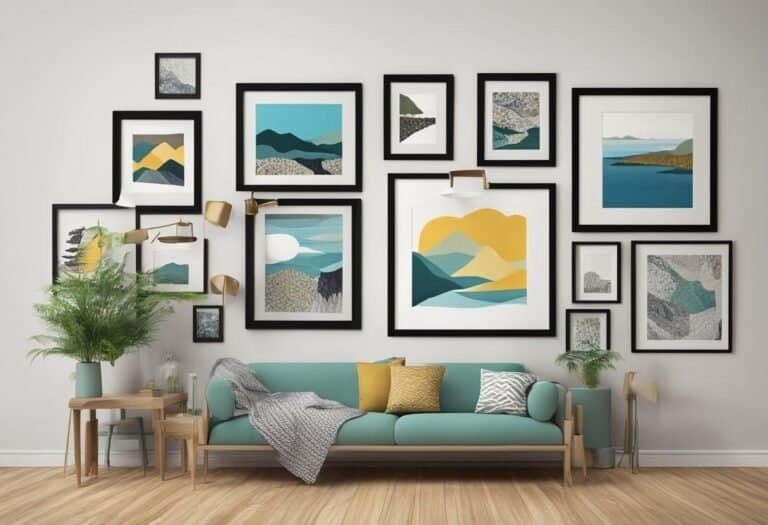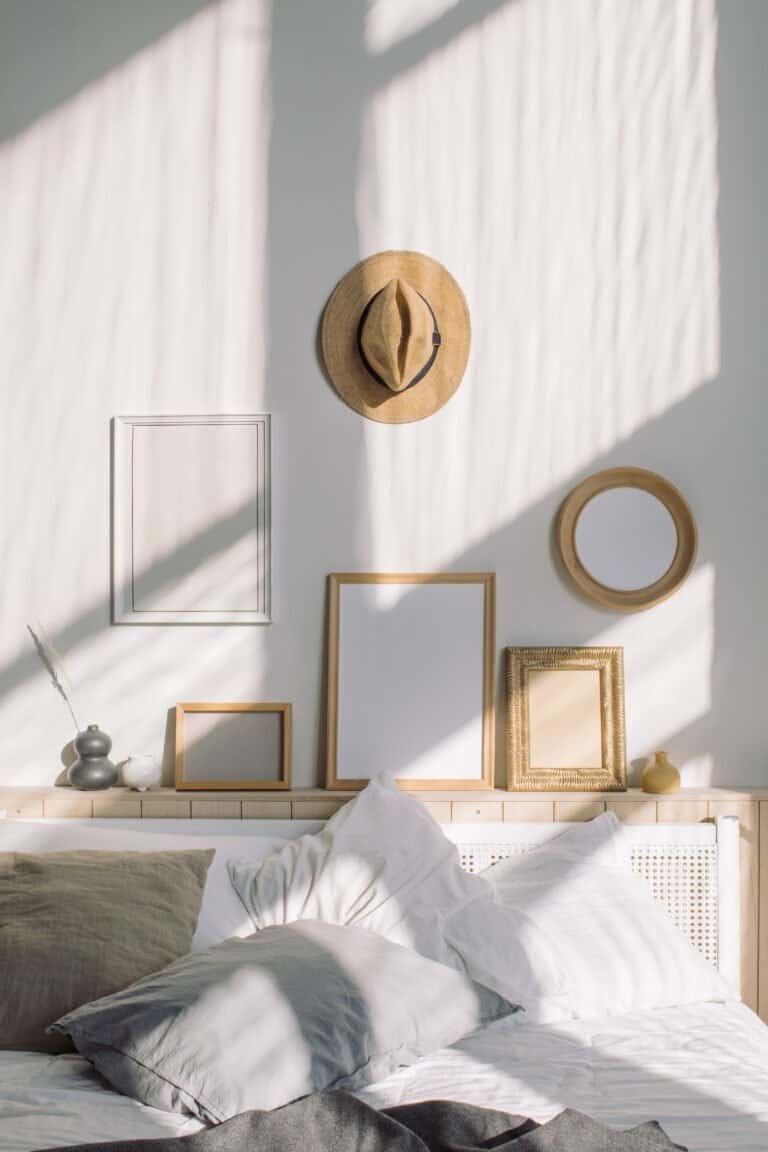Top 10 Tips for Choosing the Perfect Frames to Match Your Decor Style Effortlessly
Understanding Decor Styles and Frame Matching
When choosing frames, understanding different decor styles is vital. Each style has unique characteristics that define its look.
Popular Decor Styles:
- Modern: Features clean lines and minimalistic designs. Frames should be sleek, often in metal or simple wood.
- Classic: Embraces ornate details and traditional shapes. Gold or dark wooden frames enhance this style’s elegance.
- Industrial: Known for raw materials like metal and wood. Frames can be bold and rustic, adding to the edgy feel.
- Bohemian: Celebrates a mix of colors and textures. Use colorful or eclectic frames to complement the vibe.
Color palettes play a key role in frame selection. They should either match or contrast with the colors in the room. This harmony contributes to the overall visual appeal.
Tips for Color Matching:
- Choose frames that blend with dominant colors in the decor.
- Opt for contrasting colors to create a striking focal point.
Also, consider the size of the frames. They should balance with the space and the artwork. A large frame can dominate, while smaller frames can create a gallery wall effect.
Frames do more than hold art. They enhance the overall decor, making it important to choose wisely to reflect personal style. Understanding how decor styles relate to frame choices can elevate any space.
The Fundamentals of Selecting the Right Frame
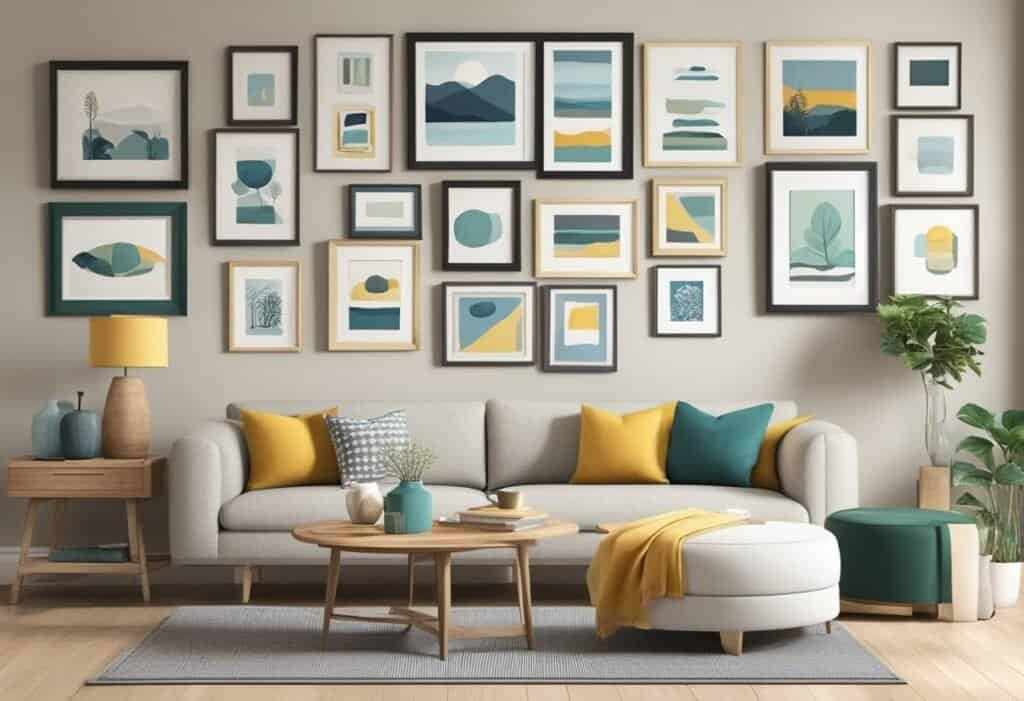
Choosing the perfect frame requires attention to key aspects that enhance both the artwork and the surrounding decor. Understanding focal points, frame size, and material options is essential for a well-balanced display.
Identifying the Focal Point
The focal point of a room often determines the type of frame best suited for the artwork. It can be a prominent piece, such as a fireplace or a large window. The frame should draw attention to the artwork without overwhelming other elements.
Choosing a frame that highlights the colors or themes in your decor is important. For example, a vibrant piece can benefit from a simple frame to allow the art to stand out. Frames with bold designs work well in neutral spaces, adding visual interest without competing with the artwork.
Considering Frame Size and Proportion
Frame size directly impacts how artwork interacts with its environment. The frame must complement the dimensions of the artwork. A frame that is too large can overpower the piece, while a frame that is too small may not provide adequate emphasis.
Proportion matters as well. A large piece may require a wider frame to balance its presence on a wall. As a general guideline, frames should not take more than one-third of the artwork’s total height. This proportion helps maintain visual harmony in the space.
Exploring Frame Materials and Styles
Different materials contribute to the feel of the frame and its compatibility with decor styles. Wood frames impart warmth and can range from rustic to modern. Metal frames offer a sleek, contemporary look.
When selecting frame styles, consider the overall theme of the room. Classic paintings often suit ornate frames, while modern art may look best in minimalist designs. Additionally, the finish of the material—like matte or glossy—can affect how the frame complements both the artwork and surrounding decor.
Visual Harmony: Choosing a Frame to Complement Your Art
Choosing the right frame is essential for enhancing the beauty of artwork while maintaining a cohesive look in any space. To achieve visual harmony, one must consider both the frame style and the impact of matting. Understanding the interplay between these elements will help create a balanced and appealing display.
Matching Frame Styles with Types of Art
Different types of art require distinct frame styles to match their character. A contemporary piece, for example, can benefit from a sleek, minimalist frame that doesn’t overwhelm the artwork. In contrast, traditional paintings often look best in more ornate frames that reflect their classic nature.
When selecting a frame, consider the frame profile. A wide or chunky profile suits bold, vibrant artwork, while a narrow profile complements delicate pieces.
List of frame styles to consider:
- Modern: Clean lines; works well with abstract art.
- Traditional: Ornate detailing; ideal for classic paintings.
- Rustic: Natural wood finishes; complements landscapes or nature-themed artwork.
Matching the frame style to the artwork type enhances the overall aesthetic and ensures that the frame becomes a part of the artistic experience.
The Role of Matting in Art Framing
Matting is a significant element in art framing that provides both aesthetic and protective functions. It serves as a visual spacer between the artwork and the frame, helping to highlight the art itself. Choosing the right mat color can enhance the artwork’s colors and themes.
When opting for matting, consider the color harmony. Neutral tones often work well with various art styles, while bold colors can make a statement. The size of the mat is also crucial; a wider mat can create a sense of spaciousness, particularly for small artworks, ensuring they do not feel cramped.
Choosing the right mat and frame together can create a cohesive look that draws attention to the art. This thoughtful combination will further enhance the visual harmony of any room.
Customization Options for Personalized Framing
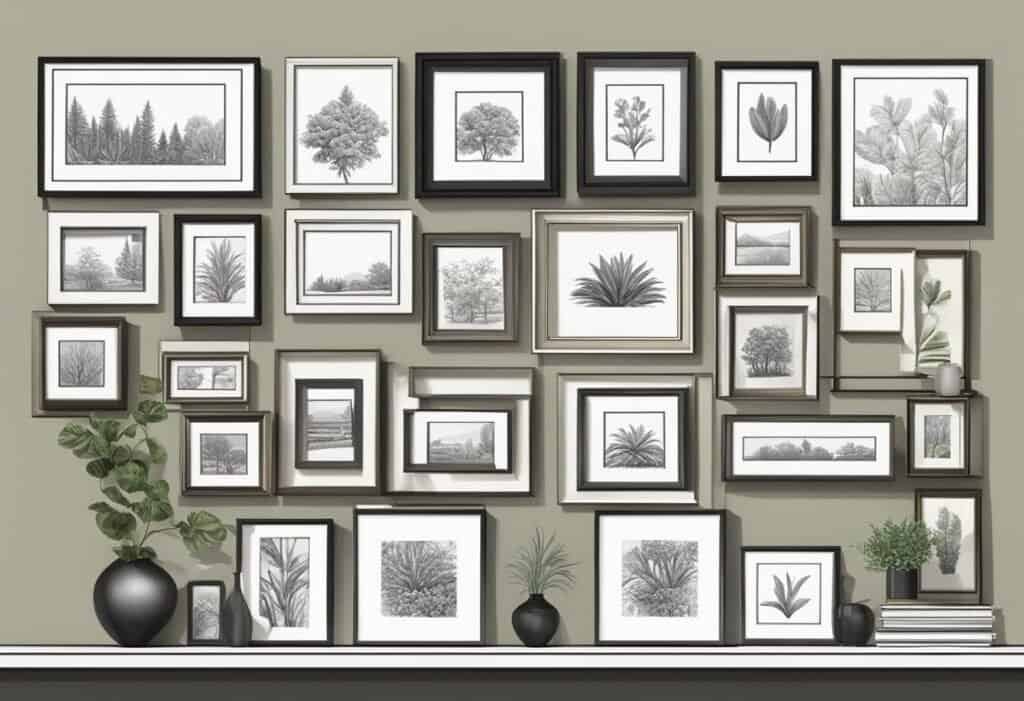
Choosing the right frame can elevate artwork and complement home decor. Custom framing offers unique solutions tailored to individual needs, ensuring the perfect fit and style.
When to Consider Custom Framing
Custom framing is ideal in various situations. If an artwork has a non-standard size, custom options provide a precise fit. This prevents issues like gaps or overlapping.
Additionally, when the artwork is valuable or delicate, custom frames offer better protection. Heirlooms or special pieces deserve frames that enhance their beauty and safeguard them from damage.
Another reason for custom framing is matching the decor style of a room. Custom frames can be designed in specific colors, materials, and finishes to blend with existing furnishings seamlessly. This creates a cohesive look in any space.
Advantages of Custom Frame Solutions
Custom frame solutions provide several benefits. First, they allow for complete control over the design. Choosing the material, color, and style helps achieve a personal touch. This contrasts with mass-produced frames that may not fit well with individual tastes.
Moreover, custom frames protect the artwork more effectively than standard frames. They can include features like UV protection glass, which prevents fading, and acid-free mats that preserve the piece’s condition.
A custom frame can also enhance the artwork’s impact. A well-chosen frame can emphasize colors and textures, making the art stand out. This connection between the frame and artwork enhances the viewer’s experience.
Aesthetics and Functionalities of Various Frame Types
Choosing the right frame involves understanding how different types enhance both the art and the surrounding decor. Each frame type offers unique aesthetics and practical functions, making them suitable for varying design styles.
Wooden Frames for a Classic Look
Wooden frames provide a timeless appeal that complements various art styles. They come in different finishes, including oak, pine, and mahogany, allowing for customization that matches the decor. Aged or distressed wood can evoke a rustic feel, while polished wood enhances elegance.
These frames are sturdy and provide excellent support for artwork. They offer natural insulation, helping to protect pieces from temperature fluctuations. Wooden frames can also be easily painted or stained, adapting to changing tastes. They work well in traditional, farmhouse, or vintage settings, making them versatile options for many homes.
Modern Frames for Contemporary Spaces
Modern frames often feature sleek lines and minimalist designs, making them ideal for contemporary decor. They might be made from materials like acrylic or metal, allowing for an understated elegance. Colors range from bold, vibrant shades to neutral tones, accommodating different art pieces.
Functionally, modern frames are designed to highlight artwork without distraction. They often come with UV-protective glass, ensuring the longevity of the art by shielding it from harmful rays. These frames are well suited for gallery walls or minimalist spaces, effectively complementing the art while enhancing the overall aesthetic of the room.
Floating and Metallic Frames for a Modern Touch
Floating frames create a striking visual effect by allowing the artwork to “float” within the frame. This style is suitable for various compositions, enhancing paintings, photos, and prints. The frame typically consists of glass on both sides, providing a seamless look that adds depth.
Metallic frames, on the other hand, bring a sleek, industrial vibe. They can add a modern touch to any room and are available in finishes such as silver, gold, or black. These frames are often lightweight and durable, making them practical for frequent changing of displays. Both floating and metallic frames are excellent choices for showcasing artwork in modern or eclectic home designs.
Color Theory in Frame Selection
Selecting the right frame color involves understanding how it interacts with surrounding elements, such as wall colors and artwork. This section explores how specific choices in frame color can enhance a home’s decor style, focusing on frame options and the importance of neutral colors.
Choosing Frames Based on Wall Colors
When selecting frames, wall color plays a crucial role. Bright walls benefit from contrasting frames that create a striking effect. For instance, a dark wood frame can stand out beautifully against light-colored walls.
Conversely, if walls are painted in bold shades, choose frames that complement these colors rather than compete. A soft gray frame can harmonize with bright blue walls, enhancing the room’s aesthetic without overshadowing it.
Highlighting wall textures is also important. A frame that reflects the wall’s texture can unify the space. Therefore, consider the wall color and texture when selecting frame options for a more cohesive look.
Neutral Frames to Accentuate Artwork
Neutral frames are versatile and can enhance the visual appeal of any artwork. Colors such as white, black, and various shades of gray can provide a clean backdrop, allowing the artwork to take center stage.
For colorful or busy artworks, a simple black or white frame can act as a boundary, drawing attention without distraction. Neutral frames also work well with different decor styles, making them a safe choice for those who frequently update their spaces.
Using a variety of neutral shades can add depth to a gallery wall. Combining different textures, such as matte and glossy finishes, can create an interesting contrast while still maintaining a unified look.
Using Color to Create Clean Lines and Minimalist Decor
In minimalist decor, clean lines are vital. Choosing frames that align with this principle can make artwork appear more intentional. Simple, slim frames work well in such settings, emphasizing the art itself.
When selecting colors, opt for soft tones that align with the minimalist aesthetic. Shades like pale beige or light pastel hues can enhance the clean lines while providing a subtle contrast against white walls.
Using monochromatic frames can also reinforce a streamlined look. A uniform color palette across all frames will create a sophisticated and elegant atmosphere, complementing the minimalist decor while highlighting the beauty of the artwork.
Exploring Sizing Options for Harmonious Wall Displays
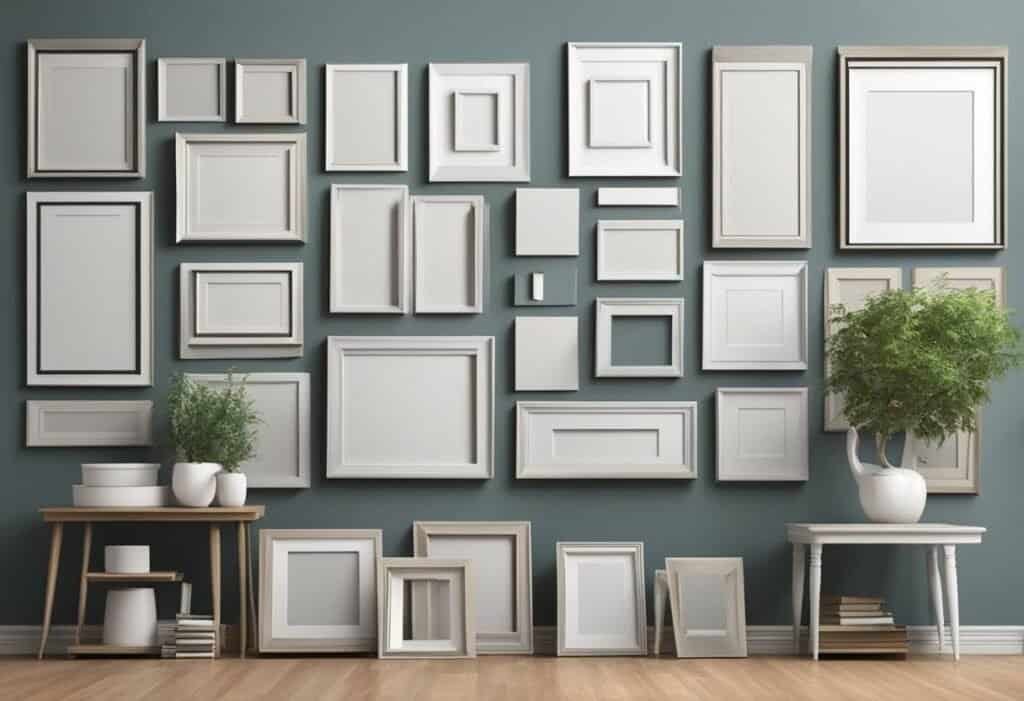
Choosing the right frame size is crucial for creating a visually appealing wall display. Different sizes can dramatically affect the overall look of the space.
Mini Frames (10-17 inches)
These frames are ideal for small areas. They work well in collections or unique spots like reading nooks.
Small Frames (18-24 inches)
Suitable for tight spaces, small frames complement other pieces. They are excellent for gallery walls or groupings of three to five frames.
Medium Frames (25-32 inches)
Medium frames offer a balanced look. They can serve as focal points in living rooms or hallways.
Large Frames (33-40 inches)
These frames create a bold statement. They work best on spacious walls, drawing the eye and making the room feel more inviting.
Extra Large Frames (over 40 inches)
Perfect for making a big impact, extra-large frames should be used wisely. They can dominate a room, so surrounding them with smaller pieces helps achieve balance.
It’s important to experiment with different arrangements before committing. Measuring the wall space and planning the layout can ensure a harmonious display that suits personal style and the room’s decor. This thoughtful approach creates a professional and polished look.
Where to Shop: Sourcing Frames Locally and Online
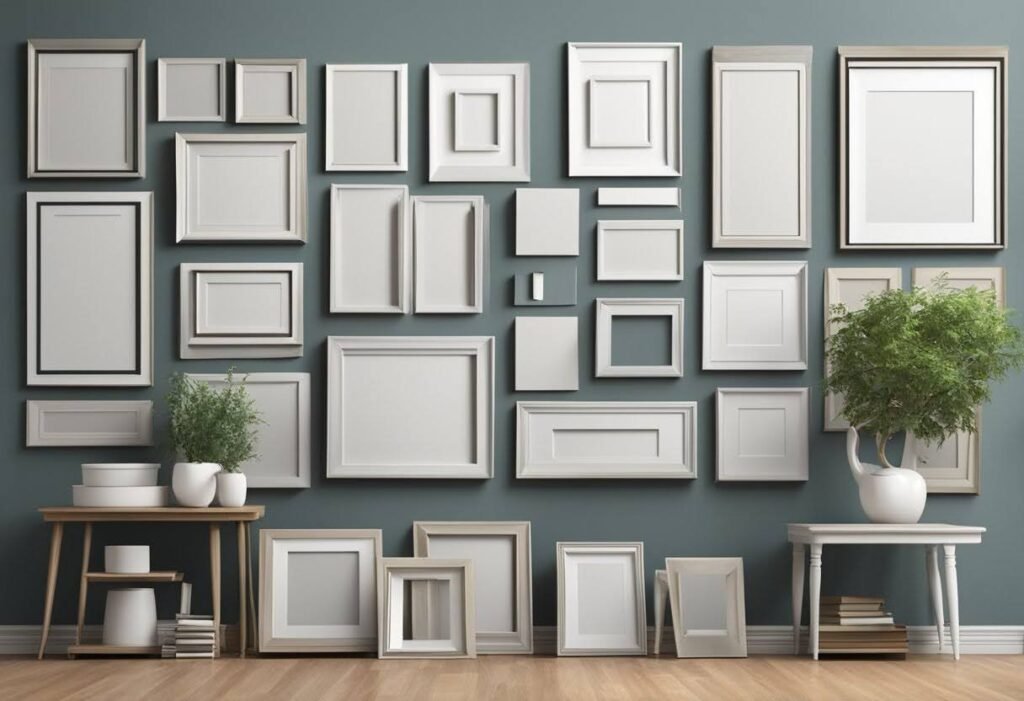
When looking for the perfect frames, shoppers can explore both local and online options. Each choice has its benefits and can cater to different needs.
Local Art Stores Visiting local art stores allows for hands-on selection. Shoppers can see the material and finish in person. Local shops often provide unique, artisanal frames that reflect the area’s style. Staff can also offer personalized advice.
Art Galleries Art galleries may have a curated selection of frames suitable for displaying artwork. They often choose frames that complement the art they exhibit. Visiting these spaces can provide inspiration and access to high-quality options.
Online Retailers Online retailers offer convenience and a vast range of choices. Websites like Pictureframes.com and ArtToFrame allow customers to browse extensive collections. They also provide customization options that are not available locally.
Custom Framing Services For those seeking specific needs, custom framing sites like Framebridge allow users to upload images and design their frames online. This option provides flexibility in size, color, and materials.
Choosing the right source depends on personal preference and project requirements. Both local shops and online platforms offer valuable options for any framing needs.
Final Thoughts: Crafting an Aesthetic and Cohesive Art Display
Creating a visually appealing art display involves thoughtful selection of picture frames that complement the overall decor style. Each frame serves not only as a protector but also as an important design element.
When choosing framing options, consider the colors, materials, and style. For a modern look, metal frames might work best. In contrast, wooden frames can add warmth and charm to a more traditional space.
Framing your art requires balancing boldness and subtlety. A striking frame can enhance a vibrant piece, while a muted frame can allow art to take center stage.
Here are key points to remember:
- Match Colors: Choose frames that match or complement the colors in the artwork and the surrounding decor.
- Consider Size: Ensure the size of the frame fits well with the artwork. Oversized frames can create a dramatic effect, while smaller frames work for a delicate touch.
- Think About Texture: Different materials—such as glossy, matte, or distressed finishes—add texture and interest.
Creating a cohesive display means grouping art frames that share similarities. This could be in form, color, or style. A unified look enhances the visual impact and makes the display more inviting.
Ultimately, the right art frames can elevate a room, turning it into a stylish haven of creativity.





